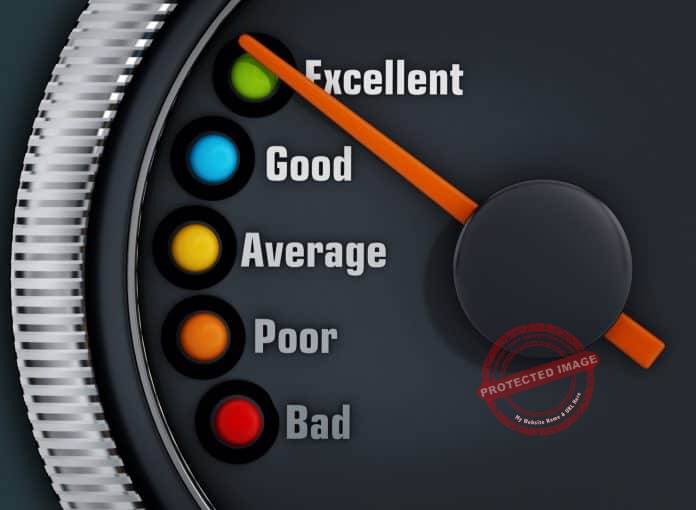Employees’ performance in any organization is directly proportional to efficiency and business growth, and that is why we need to talk about how to improve it.
It should be a cause for concern for employers.
This is true, especially when they invest time and resources to hire employees they consider the most suited for a role and fail to perform to expectations.
When one or more of your employees is putting in poor performance, it affects every area of your establishment.
It could have an impact on the quality of your customer service and satisfaction.
Additionally, there could be adverse effects of this on the productivity of not just the employees in question but everyone.
In the long run, if care is not taken, this can also start affecting sales and reduce your business profits.
Hence the need to be concerned about employees’ performance in your organization and improve it when necessary.
At the end of this blog post, you would discover many practical ways to start improving your employees’ performance starting today.
Consequently, increasing productivity and profitability in your business.
How To Improve Employee Performance
Failure to improve employees’ performance as quickly as it’s noticed can eventually spell doom for your business.
Fortunately, you do not have to experience business setbacks due to poor employees performance.
Also, you need not resort to firing employees and replacing them because of poor performance.
Unless, of course, that is the last option.
All of these have their implications, and they are not favorable.
There are better ways of handling poor-performing employees, and that is, improving their performance.
But first, what does employee performance entail?
Employee Performance – Meaning
As you already know, an employee refers to an individual you hired to fill a particular role or position in your organization.
An employee is expected to perform the duties and responsibilities of that role with utmost diligence and efficiency.
Anything less than this would be seen as inefficient and unproductive.
On the other hand, performance measures ‘how well’ someone or something is doing in their expected job.
In other words, are they performing up to set standards, requirements and even exceeding expectations?
If we merge these two words, we will define employee performance as how employees perform their job duties/responsibilities and achieve results.
When assessing this, you as an employer would be looking at the employee’s input with what’s expected of the individual in the assigned role.
Also, the output of the employee gives a clear indication of the performance.
That means that an employee might appear to be putting in a lot in his job, but does it translate to results?
Aside from achieving results, there’s also efficiency.
Employee efficiency involves how employees use available tools and resources to get results.
It is important to note that when we speak of performance in this context, it is different from the performance of an organization.
Employee performance is looking at an individual staff in your organization and then assessing how well they meet certain requirements.
To improve employee performance, you also need to know how to measure performance levels.
So let’s discover how to do that.
How to Analyze Employee Performance/Factors to Measure Performance Levels
Employee performance is not something to leave to intuition or decide based on sentiments.
Rather, there are certain indicators as to whether or not your employees are putting in top performance or not.
Here are some areas that can help you properly assess your employees’ performance:
Level of Input
One area you can measure to ascertain the level of performance of your employee is a measure of how much they are putting into the job.
This might be in the amount and quality of time they devote to the job at hand.
In this area, you will need to measure how often your employees show up at work and how much of the office they use for work.
It is one thing to show up at the office every day, but it is another thing to use the time spent at work productively.
Does the employee spend more time doing less relevant things during office hours, like watching movies or playing games?
Above all, the level of input that your employees put into their given roles and tasks can be used to measure their performance level.
Quality of Work/Output
Sometimes in business, it is not about how far but how well.
When measuring employees’ performance levels, you can use one factor: the quality of work/output.
Are the employees delivering high-quality jobs that could be described as his best or even exceeding expectations?
When compared with the job done by other colleagues, would you say they are keeping up or doing better?
How about the industry standard for that role or job?
Can you say that the employees in question measure up to standard?
The answers to these questions would reveal output level and help you measure performance.
Client Feedback and Satisfaction
Your employees are hired to serve your customers and ensure they get maximum satisfaction.
Therefore, it is easy to know if your employees are not performing well by observing your clients’ reactions.
Sometimes, when you review your customer feedback and notice increasing complaints, this indicates dissatisfied customers.
It is not in all cases that this is a fault of underperforming employees.
However, it is still a strong possibility.
To be sure, some organizations incorporate a feedback mechanism on their website’s online chat platform.
After a customer care representative has served a customer, The customer can be asked to provide feedback on the service received.
Of course, you cannot use isolated situations or feedback to conclude, but it helps lookout for trends.
Is an employee constantly and consistently getting bad reviews and feedback from customers?
Does it show from all indications that it is not just a matter of hard-to-please customers but rather a poor employee performance?
If your assessment shows that it’s the latter, that can indicate an underperforming employee.
Use of Performance Metrics and Data Collection
Every standard and structured organization has Key Performance Indicators (KPIs) for every job position.
The KPI is a metric that you can use to measure an employee’s performance over a specified period against a set objective.
When you have performance metrics to assess your employees, it can help you know when an employee performs optimally.
However, you should make these metrics clear to your employees from the onset.
It is also necessary to stress the key objectives and timeframe for which the set goal must be achieved.
That way, when an employee is deemed underperforming using the data collected from the metrics, there would be no complaints.
A Measure of Working Relationship
For the success of your business, you shouldn’t solely be interested in your employees’ performance on the job.
You should also be interested in the working relationships employees have with each other.
An employee might be doing great in other areas, such as work output and work quantity.
However, if the employee is difficult to work with and fosters disunity instead of peace, that could affect performance levels.
It shows that such an employee lacks team spirit.
In all, performance covers a wide variety of areas, and the personality and interpersonal relationships of the employee are also included.
Level of Respect for Company’s Value, Culture, and Policies
Another indicator of your employees’ performance level how well they adhere to the values and organization’s policies.
An employee should abide by the rules and regulations in the office place, including respect for the condition of service.
Employees that fall short in this area are not performing at the optimum level, regardless of how well they perform in other areas.
When you need to assess your employee’s performance, here is one area you shouldn’t overlook.
Ratings from Fellow Employees and Supervisors
Some organizations also deploy what we can call a peer-pert review to ascertain the performance of an employee.
This is done by allowing fellow employees to rate their colleagues using a scale and many different areas.
Most times, supervisors or team leads are tasked with this responsibility.
However, it is not completely out of place to allow every employee to do this rating.
To ensure this process doesn’t lead to strife and conflict afterward, feedbacks should be kept anonymous.
You might be surprised at how the reviews you get from employees about their co-workers can tell you about their performance.
Overall, those are some ways to measure performance levels in your business.
Now, why is improving employee performance such an important concept?
Why is Improving Employee Performance Important?
Now, let us say you’ve done your assessment using one, some, or all of the analyses stated above.
If you find out that one or some of your employees are not at the top of the game performance-wise, what do you do?
Hold on a bit on the “fire them immediately” perception.
As you would soon find out, firing underperforming employees shouldn’t be the first option, as it does more harm than good.
Instead, you can and should first work on improving their performance levels.
Now, here is why that is important;
High Performance Equals High Productivity
It’s a clear fact that improving the performance level of your employees would invariably increase their productivity.
When employees perform at their best, especially when it comes to working input, they get more productive.
They can complete tasks in record time, meet deadlines, and even exceed expectations.
Hence, when you are improving the performance of your employees, you are also contributing to higher productivity in the office environment.
Employee Replacement Doesn’t Come Cheap.
When you saw the question: “What would you do when you find out some employees are underperforming?” what came to your mind first?
You probably just thought: “Well, I let them go and hire a replacement.”
Nice try, but it is not as simple as it sounds.
The hiring process is costly.
Not only does it cost you money, but it also demands time and other resources valuable resources such as time, energy, etc.
Recruitment is the easiest step.
How about orientation and onboarding, which sometimes might take months to complete.
You would agree that improving an employee’s performance makes more financial sense than firing to replace.
Poor Performance is Infectious
Yes, you read that right. An underperforming employee can spread this attitude like a virus around your organization.
Just as an employee can watch another top-performing employee and learn from him, so can they learn from the poor ones.
If you overlook poor performance from just one employee, you might end up having a lot of underperforming employees within your ranks before long.
One reason for this is that some who are doing fine already might begin to think that subpar performances are allowed.
This is especially so if nothing is done to address it.
And here is the shocker.
Your performance as an executive might even be affected if care is not taken.
Do you now see why improving employee performance is very important?
Mistakes are Reduced to the Barest Minimum
Underperforming employees are the ones most prone to making avoidable mistakes and putting the company in complicated situations.
However, when you notice underperformance in an employee and quickly improve it, mistakes are reduced.
That means you can spend most of your time managing the business and making more waves rather than working to fix what shouldn’t have broken in the first place.
It Contributes to a Happy Work Environment
Ask your employees what they think about having someone on their team whose performance doesn’t measure up with others.
They will likely tell you how frustrating this can be.
Undoubtedly, putting in your best and putting up with another employee who isn’t doing that much can make you dissatisfied.
However, when you can quickly spot this issue and help the underperforming one improve, you contribute to a happy work environment.
This way, no one feels cheated or gets the impression that one person is doing more than the other person.
Instead, your employees are united in thought and purpose, and the results can be astonishing.
Increased Customer Retention Rate and Acquisition
The best employees get you and help you retain the best customers.
It’s not hard to see why it is therefore important to improve the performance of employees, especially for a customer-centric organization.
Top-performing employees will always handle their jobs well.
This inevitably means that they’ll offer excellent services to customers.
As a result, leading to more satisfied customers and improving customer retention rate.
Therefore, if you are concerned about your customer retention rate and want to get new customers, improve employee performance.
Now to the crux of the matter, how to improve customer retention rate.
How to Improve Employee Performance – What Can You Do?
At this point, we know it is no longer a question of if you will love to improve your employee(s) performance.
You’ve already seen overwhelming reasons why this should be a priority and the negative effects of neglecting this.
Nevertheless, you might be a little bit confused about how to go about this.
You do not need to let that bother you because we’ll show you the effective strategies for improving employee performance.
Set Clear Standards, Expectations, and KPIs
The first thing to do to improve employee performance is to determine what constitutes top performance or not in the first place.
That means, if you’ve not yet done so, it is important that you make your standards and expectations from your employees very clear.
Additionally, you should have key performance indicators (KPIs).
This is necessary because if you are to inform an employee that they are underperforming, you need data to back it up.
However, if there’s no system to track what they are doing and what is expected of them, there is no way to tell.
As the common saying goes: “There is no sin in a lawless land.”
Identify the Cause of Underperformance
You cannot treat that which you do not know or do not clearly understand.
That applies when it comes to improving your employees’ performance level.
It is important that you first know what exactly is responsible for the subpar performance the employee is putting in.
Could it be that it wasn’t like that before and just started because of a personal problem they are going through?
Is it due to distractions either at work or in their personal lives?
Perhaps, the employee is deliberately self-sabotaging because of fear of failure?
How about if the employee is committed to working but doesn’t fully understand the job scope and requirements?
Poor performance at work could result from various reasons.
Hence, to improve employee performance, look out for the underlying factors.
Only then can you provide adequate and useful help to improve their performance.
Discuss Performance Levels with the Employee
Another step you can take towards improving employee performance is providing open and timely feedback on this.
You do not want your employees left to second-guess their performance level and whether they are meeting expectations.
When you notice they are underperforming and can pinpoint what is responsible for it, you need to call a meeting.
At this meeting, you present the data showing that the employee is underperforming and reviewing the data.
Remember that before now, you’ve already set clear standards and expectations.
Therefore, it won’t be difficult for employees to identify areas where they fail to meet up.
The meeting can also be an avenue to understand whatever challenges are contributing to their low-performance levels.
Consequently helping you identify specific areas you need to improve to enhance performance levels.
Provide Training for Employees
Frequent training has also been proven to be very effective in improving employee performance.
Such training should be focused on areas needing improvement within the organization and new knowledge and skills that can help.
Additionally, if this performance issue is peculiar to just a particular employee, you can provide direct training.
This might be a one-on-one training session, or you could also provide online resources such as videos, books, or blog articles, that could help.
The goal is to use anything that can help to boost performance and productivity to assist the employee.
Note that training is not a one-off thing, and even if you feel your employees’ performance is improving, you need to make it a regular part of your management procedure.
That way, employees can consistently have high-performance levels.
Improve the Work Culture and Working Conditions
The environment where your employees work equally affects their performance, either for good or bad.
Poor work culture and work environment can stress employees and make them unhappy.
And the result is that unhappy employees are not motivated, which affects their performance and productivity.
On the other hand, improving work culture and provide convenient working conditions increases performance levels.
This would include allowing sufficient time for employees to rest during work hours.
Also, you want to ensure you properly screen applicants’ behavior before employing them.
This is because good co-workers make high-performance levels easier to achieve.
Offer Incentives
Incentives serve as what drives employee engagement and motivates them to give their best performance.
There are various things you can do to incentivize your employees.
A simple appreciation and recognition of their work can go a long way to boost their morale.
Additionally, you can offer them things like bonuses, a pay rise, time off work, or even buy them lunch.
The truth is that high-performing employees might be slacking in performance levels just because they do not feel motivated to continue.
However, when they know that their work does not go unnoticed and unappreciated, they are encouraged to perform better.
Cut Out Distractions
One other thing that might cause employees to have low performance is distractions at the place of work.
Sometimes, these distractions might be from them, such as cellphones, friends e.t.c.
At other times, it could be something you’ve placed in the office space, e.g., a television.
You can find out first if distractions are responsible for the poor performance you are getting from your employees or not.
If it is, you can then take appropriate measures to cut out such distractions.
Some companies have found it beneficial to block social media websites on the employees’ office computers.
Others have strongly advised employees to do away with their phones during work hours, with repercussions for breaking the rules.
As the business owner, you would need to decide which strategy would work best to cut out distractions and improve employee performance in your organization.
Assign Roles Based on Skills, Qualifications, and Personality
It is also important for you to do a Strength and Weakness analysis on your employees when improving performance.
Could it be that the main problem with underperforming employees has been putting them in the wrong position/department all along?
An employee might be performing poorly in a department but break records and exceed expectations in another.
In this area, you should know what skills and natural abilities each of your employees have.
You should also understand their personality.
Imagine having an introverted person take a leadership role in your sales and marketing department?
While it’s not impossible, but the chances of top performance are pretty low.
Such an employee can get better with training and experience.
But it might be more effective to move them to another department where they fit best.
Overall, you properly match the job roles with the employee’s skills; you can help them improve their performance.
Provide the Right Tools and Resources
You might hate to hear it, but what if you are the one impeding your employees’ performance all along?
Skilled employees are like skilled workers who need the right equipment to function properly.
As a manager, you should provide your employees with the tools and appropriate resources to carry out their roles.
If you do not equip them, it would be harsh to blame them later on for poor performance.
These tools and resources would include appropriate structure, infrastructures, hardware, software, power supply, ventilation e.t.c.
Assign High Performers as Mentors to Underperformers
You can also use your employees who perform excellently to help improve those who fall short.
This is called an internal mentorship program.
You can tell the employees who have problems with their performance to work closely with top performance in your organization.
When appropriate, you could also merge their work desk so that they work in tandem.
The experience of the excellent employee would greatly benefit the other one, and their superb performance can rub off on the underperforming ones.
Encourage Rest; Enforce Break Periods and Leave
An employee’s performance might drop due to fatigue and exhaustion.
That is why you should enforce going on breaks in your organization.
This isn’t just something you leave to the discretion of the employee or not implement at all.
They must take time out to rest at work.
Additionally, it is beneficial that you have a working arrangement for a leave period for your employees.
Leave periods to allow the employees to unwind, go on vacations with family and friends, and do other “fun” stuff.
Usually, the employees come back from these breaks refreshed and energized.
Delegate
It might sound counterproductive to delegate more to employees in a bid to improve their performance.
But it’s not.
Sometimes the performance of employees drops because their work is monotonous, and they do not receive lots of added responsibilities.
It is often said that with added position comes added responsibilities, and delegating other work to your employees will make them work harder.
Thus improve their productivity.
Bottom Line on How to Improve Employee Performance
In conclusion, having employees with poor performance isn’t a death sentence for your business or employee.
By applying the right methods, you can start making your employees get better in efficiency and productivity.
It doesn’t cost much to improve employee performance as it would to fire and hire another employee.
We wish you all the best as you embark on this essential task to boost your business returns by improving employee performance.









